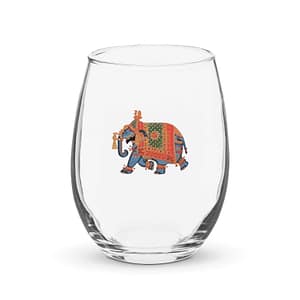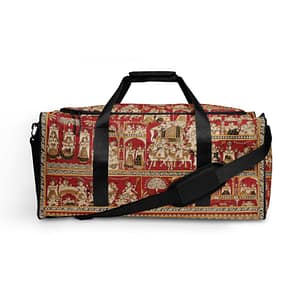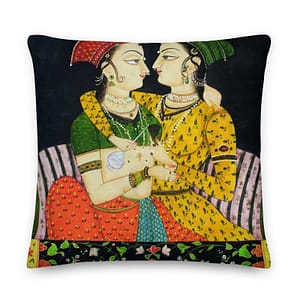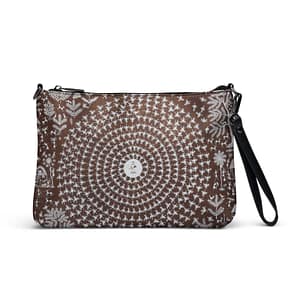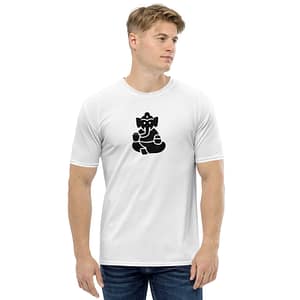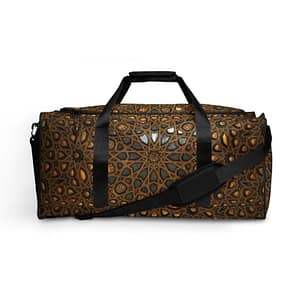the ART of INDIA
The diversity of the world’s largest national population is astounding.
122 languages, including the planet’s oldest language: Hindi. 12 religions. 1.408 billion people (est. 2021). 29 states.
This pluralism nurtures an insane wealth of art and cultural expression. Arguably, this is the creative soul of Earth.
cgk.ink is exploring this rich history. And we’re here to share our very fundamental, simple understanding of its expressions, its forms and what it says to us now in the 21st century.
Below are some of the genres of Indian art that we gleaned from ArtZolo.com:
Madhubani
Madhubani paintings are the most celebrated style of folk painting from India; it is a form of wall art that arises in the Mithila region of Bihar. This eye-catching art style never fails to amaze one by its beautiful illustrations on the exposed interior walls of the houses in Bihar. Madhubani paintings are a perfect example of artistic expression and evocative portrayal of culture and traditions. The designs make perfectly distinctive geometrical patterns, scenes from mythology, and symbolic images. The perfect blend of bright vibrant colours and unique patterns make Madhubani stand out from other painting styles. Katchni, Tantrik, Bharni, Khobar, and Godna are five different styles of Madhubani paintings.
Madhubani paintings were first created at Mithila, the birthplace of Hindu goddess Sita. When Sita and her husband Prince Rama were to be married, King Janak, father of Sita, asked for paintings to capture moments of the marriage. Madhubani painting (or Mithila painting) was traditionally created by the women of various communities in the Mithila region of the Indian subcontinents. It originated from Madhubani district of the Mithila region of Bihar. Madhubani is also a major export center of these paintings.[7] This painting as a form of wall art was practiced widely throughout the region; the more recent development of painting on paper and canvas mainly originated among the villages around Madhubani, and it is these latter developments that led to the term “Madhubani art” being used alongside “Mithila Painting.”[8]
The paintings were traditionally done on freshly plastered mud walls and floors of huts, but now they are also done on cloth, handmade paper and canvas.[9] Madhubani paintings are made from the paste of powdered rice. Madhubani painting has remained confined to a compact geographical area and the skills have been passed on through centuries, the content and the style have largely remained the same.
Warli
Warli is a 2,500-year-old traditional painting style from Maharashtra majorly practiced in Thane and Nashik region. Warli paintings illustrate the nature and social rituals of the tribe. Warli paintings also showcase day-to-day life scenarios of the local people of that particular community just like dancing, farming, hunting, praying, etc. The local women used twigs to draw such beautiful lively designs with rice paste on mud walls to convey the celebration vibes of harvests or weddings.
The Warli painting tradition in Maharashtra are among the finest examples of the folk style of paintings. The Warli tribe is one of the largest in India, located outside Mumbai. Till the 1970s, even though the tribal style of art is thought to date back as early as 10th century C.E.[1] The Warli culture is centered on the concept of Mother Nature and elements of nature are often focal points depicted in Warli painting. Farming is their main way of life and a large source of food for the tribe. They greatly respect nature and wildlife for the resources that they provide for life.[2] Warli artists use their clay huts as the backdrop for their paintings, similar to how ancient people used cave walls as their canvases.
Jivya Soma Mashe, the artist in Thane district has played a great role in making the Warli paintings more popular.
Kalighat
The Kalighat painting was discovered around the mid-19th century at Kali Temple in Calcutta. These paintings and drawings were done on paper by a community known as “patuas”. A Kalighat painting depicts scenes of everyday life and mythological deities in a captivating manner. Kalighat artists use subtle earthy Indian colours like indigo, ochre, Indian red, grey, blue and white.
Kalighat painting, Kalighat Patachitra, or Kalighat Pat (Bengali: কালীঘাট পটচিত্র) is a style of Indian paintings which originated in the 19th century. It was first practiced by a group of specialized scroll painters known as the patuas in the vicinity of the Kalighat Kali Temple in Kolkata (formerly Calcutta), in the present Indian state of West Bengal.[1][2] Composed of bold outlines, vibrant colour tones, and minimal background details, these paintings and drawings were done on both hand-made and machine manufactured paper. The paintings depicted mythological stories, figures of Hindu gods and goddesses, as well as scenes from everyday life and society,[1][2] thereby recording a socio-cultural landscape which was undergoing a series of transitions during the 19th and early 20th century,[3] when the Kalighat pat reached its pinnacle.
Today the Victoria and Albert Museum in London hosts the single largest collection of Kalighat paintings in the world with 645 paintings, including watercolors, line-drawings, and hand-painted lithographs.
The exact origin of Kalighat painting is a matter of debate and speculation among art critics and historians, for there exists no historical account which records a specific date or traces the beginnings of this type of painting, which was established by the patuas at Kalighat. Material evidence such as the type of paper and colors used in the paintings, suggest that they belong to the first half of the 19th century. Furthermore, noting the dates of acquisition of these paintings by various European collectors, historians have concluded that the emergence of the paintings roughly coincides with the establishment of the present-day Kali temple at Kalighat, in approximately the first or second quarter of the 19th century.[1] The Victoria and Albert Museum website mentions, for instance, that the artworks in the museum have been “created and collected over a period of 100 years from 1830s to the 1930s”.[2] However, S. Chakravarti estimates “Kalighat paintings were in vogue not earlier than 1850s”.[4]
Phad
Phad is a traditional Rajasthani scroll painting from India, depicting the stories of local deities, heroic figures from battlefields, adventure stories, and legendary romantic stories on horizontal cloth scrolls with the hues of red, yellow, and bright orange. Phad Painting marvellously portrays multiple stories in a single composition and beautifully maintains the aesthetics of artistic expression.
Phad painting or phad (/pʌd/; IAST: Phad, Hindi: फड़) is a style of religious scroll painting and folk painting, practiced in Rajasthan state of India.[1][2] This style of painting is traditionally done on a long piece of cloth or canvas, known as phad. The narratives of the folk deities of Rajasthan, mostly of Pabuji and Devnarayan are depicted on the phadss. The Bhopas, the priest-singers traditionally carry the painted phads along with them and use these as the mobile temples of the folk deities, who are worshipped by the Rebari community of the region. The phads of Pabuji are normally about 15 feet (4.6 m) in length, while the phads of Devnarayan are normally about 30 feet long. Traditionally the phads are painted with vegetable colors.
Miniature/Mughal
Mughal painting is a South Asian style of painting on paper confined to miniatures either as book illustrations or as single works to be kept in albums (muraqqa), originating from the territory of the Mughal Empire in the Indian subcontinent. It emerged from Persian miniature painting (itself partly of Chinese origin) and developed in the court of the Mughal Empire of the 16th to 18th centuries. Battles, legendary stories, hunting scenes, wildlife, royal life, mythology, as well as other subjects have all been frequently depicted in paintings.[2]
The Mughal emperors were Muslims and they are credited with consolidating Islam in the subcontinent, and spreading Muslim (and particularly Persian) arts and culture as well as the faith.[3]
Mughal painting immediately took a much greater interest in realistic portraiture than was typical of Persian miniatures. Animals and plants were the main subject of many miniatures for albums, and were more realistically depicted. Although many classic works of Persian literature continued to be illustrated, as well as Indian literature, the taste of the Mughal emperors for writing memoirs or diaries, begun by Babur, provided some of the most lavishly decorated texts, such as the Padshahnama genre of official histories. Subjects are rich in variety and include portraits, events and scenes from court life, wild life and hunting scenes, and illustrations of battles. The Persian tradition of richly decorated borders framing the central image (mostly trimmed in the images shown here) was continued, as was a modified form of the Persian convention of an elevated viewpoint.
Gond
Gond paintings are a series of arranged dots and dashes developed by the Gondi tribe of central India. The tribes used to recreate some famous epic mythological tales of histories to traditional songs and rituals with rich detailing and bright colours. Traditionally, the colours used for gond paintings were derived from natural resources like cow dung, plant sap, charcoal, coloured soil, mud, flowers, leaves, etc. With growing times, the Gond art has moved beyond being a tribal art style.
Gond Painting is a tribal art form practiced by Gond Tribes of Central India. Gond are Dravidian and the largest Adivasi Community in India. They are predominantly found in Madhya Pradesh but can also be traced in Andhra Pradesh, Maharashtra, Chattisgarh and Odisha. Gond believes that everything is inhabited by a spirit and therefore sacred. Their paintings reflect the close connection between man and the nature. Paintings are created out of carefully drawn lines in such a way that they convey a feeling of movement to the still images. Dots and Dashes are added to make the details and create the feeling of movement. Gond Paintings use vivid and bright colours like White, Yellow, Blue and Red which are derived from natural objects.
Coloured soil, charcoal, plant sap, mud, flowers, leaves, cow dung etc. are used in making the required colours. Recently the Gond Paintings can be seen using poster colours and canvas.
Kerala Murals
Kerala mural paintings are the most unique art form and have deep spiritual roots depicting themes of Hindu mythologies, epics of the bye-gone era, classic tales of Krishna, and mystic forms of Shiva and Shakti. These traditional art styles are made up of bold strokes, and vivid colours. White, ochre-red, bluish-green, yellow-ochre, and pure colours are predominantly used in Kerala mural painting.
Kerala mural paintings are the frescos depicting Hindu mythology in Kerala. Ancient temples and palaces in Kerala, India, display an abounding tradition of mural paintings mostly dating back between the 9th to 12th centuries CE when this form of art enjoyed royal patronage.
The scriptural basis of these paintings can be found in the Sanskrit texts, Chithrasoothram – (Chitrasutra is a part of the Vishnu Dharmottara Purana, a book written in Sanskrit about 1500 years ago. It contains 287 short verses in nine chapters and a few prose in the second chapter. There is no other book on painting as detailed as the Chitrasutra. This book answers hundreds of questions about what a painting is, why, its purpose, role, relationship with the painter, connoisseurs, and other arts. Chitrasutra will be useful to understand the true Indian painting.)Tantrasamuchaya, the fifteenth century text authored by Narayanan, Abhilashitartha Chintamani of the twelfth century and Silparatna by Sreekumaran of the sixteenth century.[1] Iconography of the mythological character in murals are based on the Dhyanaslokas.[2]
Picchwai
Picchwai artwork was made as wall hangings behind the main deity in Krishna temples in Nathdwara which narrates the stories related to Lord Krishna. Picchwais are the most colorful and intricate work concealed with symbolism in the artistic motifs. This classified devotional art practice has passed from one generation to another and a fine example of spirituality in art.
Pichhwai (also pichwai, pichhavai, pichhvai, pechhavai etc), literally meaning ‘that which hangs from the back’ from the Sanskrit words “Pichh” means back and “wais” means hanging, are large devotional Hindu painted pictures, normally on cloth, which portray Krishna.[2] They are mainly made to hang in Hindu temples of the Pushtimarg devotional tradition, especially the Shrinathji Temple in Nathdwara, Rajasthan, built around 1672. They are hung behind the idol of Shrinathji, a local form of Krishna and the centre of Pushtimarg worship, to depict his leelas. Aurangabad was another area associated with them.[3] The purpose of pichhwais, other than artistic appeal, is to narrate tales of Krishna to the illiterate. Temples have sets with different images, which are changed according to the calendar of festivals celebrating the deity.[4]
Pattachitra
Pattachitra is a traditional painting of Odisha, India. These paintings are based on Hindu mythology and specially inspired by Jagannath and Vaishnava sect. All colours used in the Paintings are natural and paintings are made fully old traditional way by Chitrakaras that is Odiya Painter. Pattachitra style of painting is one of the oldest and most popular art forms of Odisha. The name Pattachitra has evolved from the Sanskrit words patta, meaning canvas, and chitra, meaning picture. Pattachitra is thus a painting done on canvas, and is manifested by rich colourful application, creative motifs, and designs, and portrayal of simple themes, mostly mythological in depiction. The traditions of pattachitra paintings are more than thousand years old.
the ART of INDIA COLLECTION
Showing 13–24 of 47 resultsSorted by latest
-
-10%
Ornate Elephant Stemless Wine Glass
Original price was: $15.00.$13.50Current price is: $13.50. -
-11%
“Vivaah” Duffle Bag
Original price was: $89.00.$79.00Current price is: $79.00. -
Gond Style Cattle Minimalist Backpack
$56.00 -
Gond Elephant Backpack
$56.00 -
Two Ladies Embracing At A Jharoka Premium Pillow
$39.00 -
Love: Radha and Krishna Premium Pillow
$28.00 -
Warli Village Crossbody Bag
$38.00 -
Gold Gond Long Sleeve Crop Top
$46.50 -
Ganesha Men’s T-shirt
Price range: $41.00 through $43.50 -
-11%
Bengal Patachitra Duffle Bag
Original price was: $89.00.$79.00Current price is: $79.00. -
-11%
Pārsa Duffle Bag
Original price was: $89.00.$79.00Current price is: $79.00. -
PārsaTote Bag
$27.00





































































